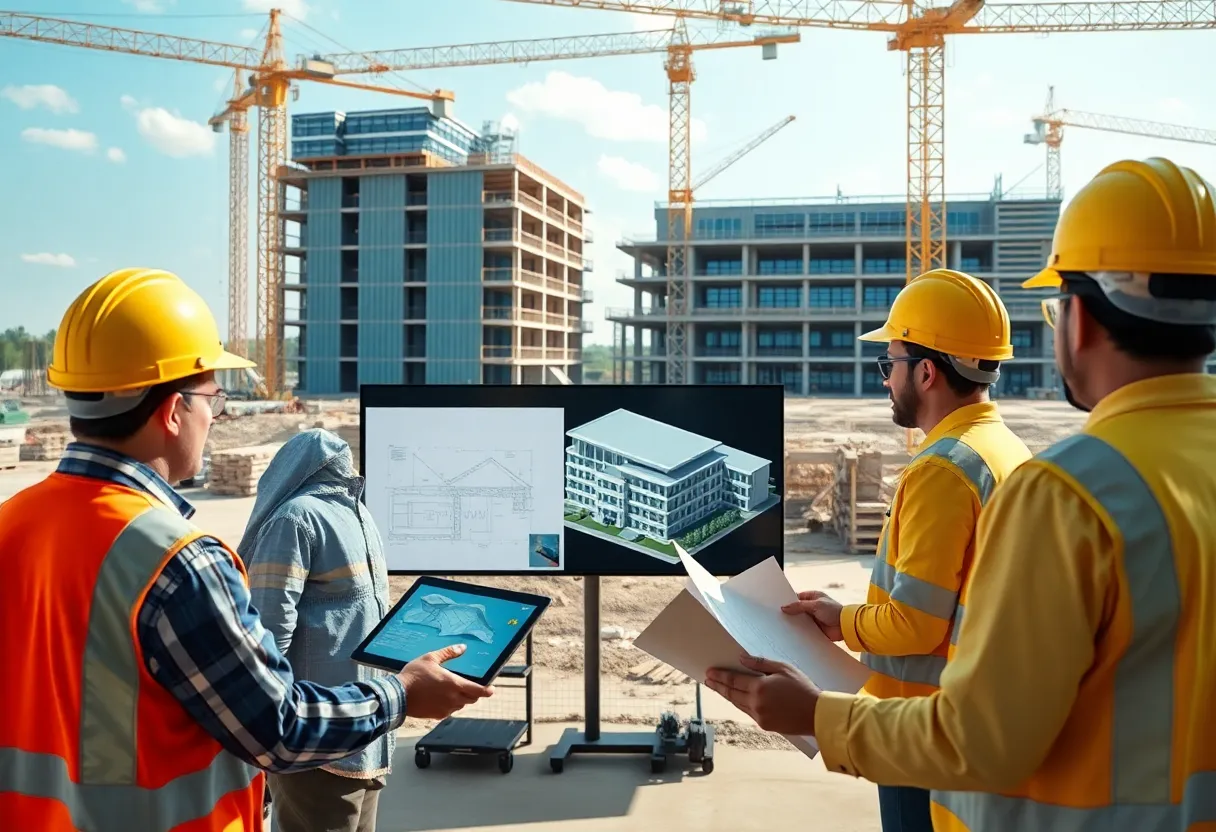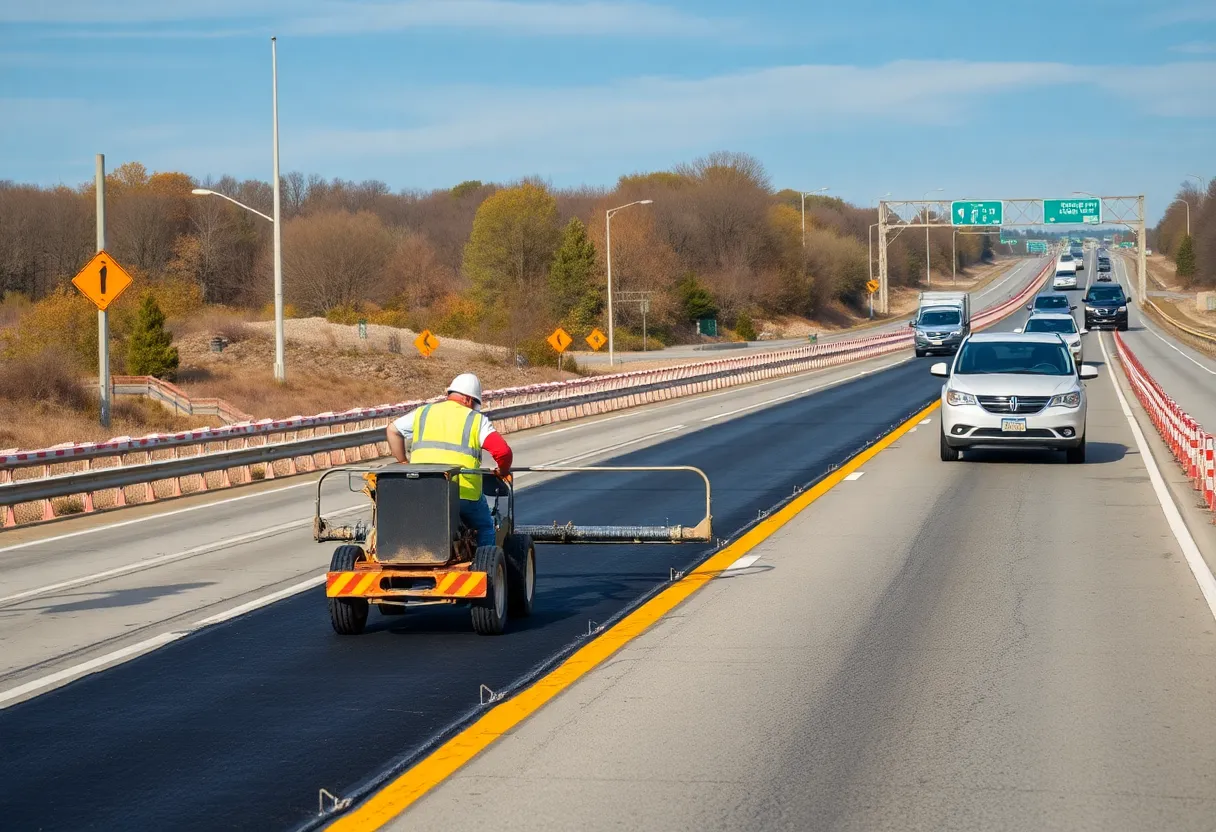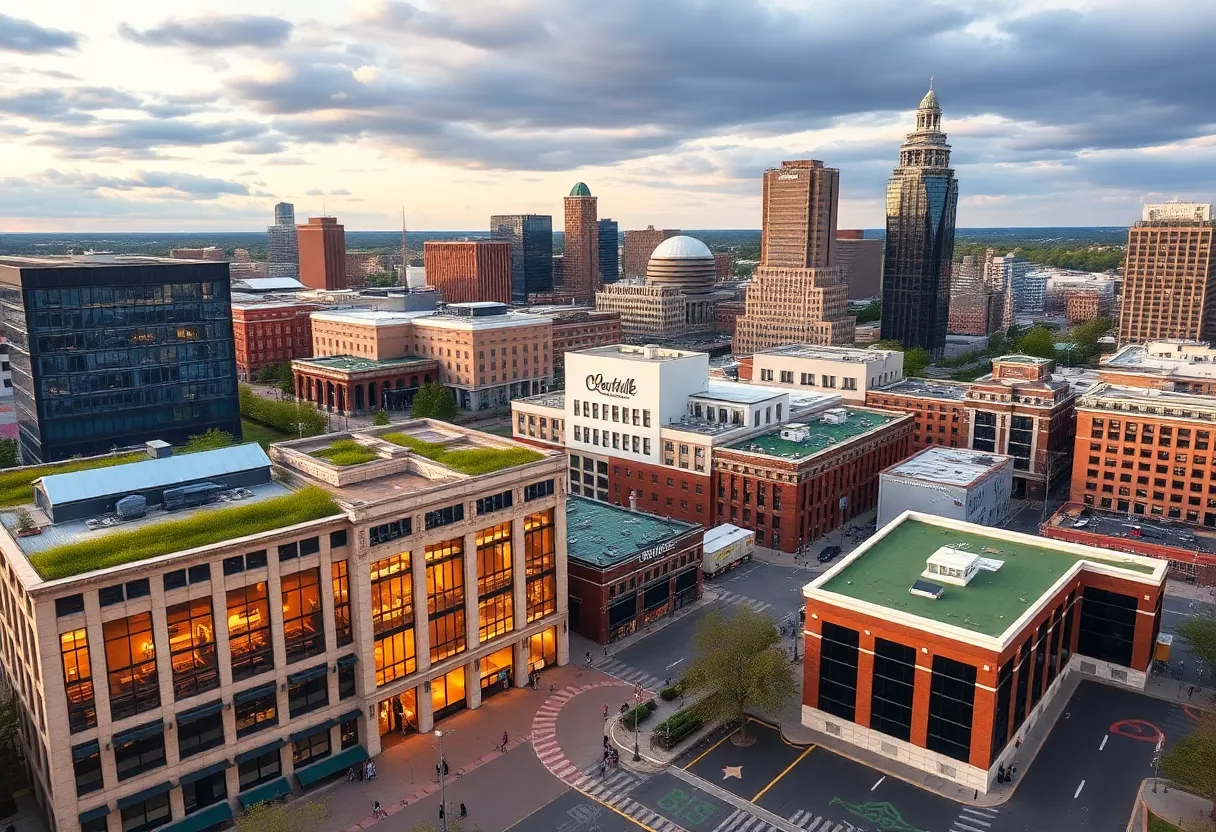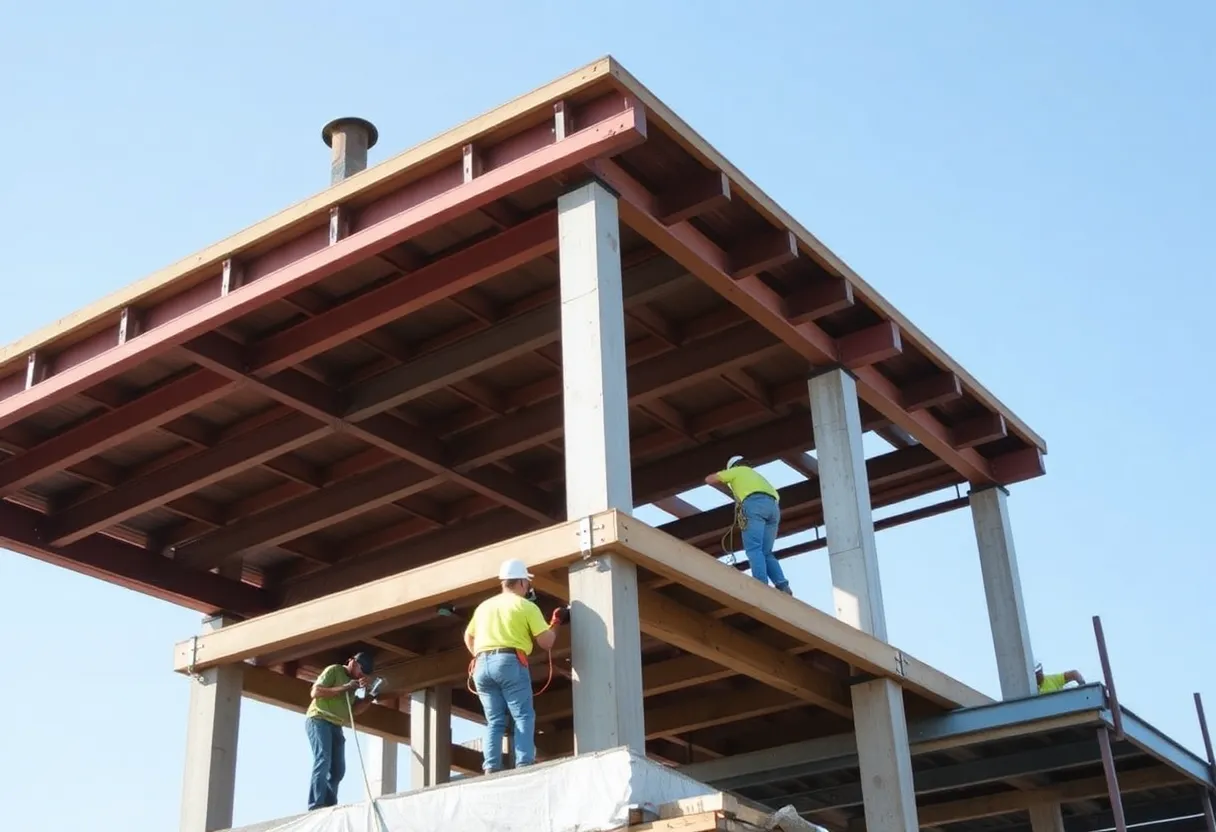Baltimore, Maryland, September 27, 2025
News Summary
Construction leaders are being urged to balance speed and risk when adopting digital tools, emphasizing pilots, clear processes and team training to protect data and embed new systems in daily work. The industry faces rapid technological change—especially from generative AI and large language models—that can streamline proposals and documentation but requires safeguards. Meanwhile, Maryland hosted a large hands-on Construction Career Day for high school students, and a university unveiled preliminary designs for a six-story, 500,000-sq-ft Life Sciences Building with more than 1,200 lab benches to foster collaborative biomedical research.
Construction industry urged to weigh speed and risk as digital tools spread; Maryland hosts large career day; Johns Hopkins shows life sciences building plans
What matters most now: Construction leaders are being urged to balance speed and risk when adopting digital tools. At the same time, thousands of Maryland high school students took part in a major hands-on career event, and a major university revealed preliminary designs for a six-story, 500,000-sq-ft life sciences building that will reshape a city campus block.
New technology: pace and precautions
A senior construction consultant says the most successful contractors balance speed and risk when assessing and implementing new technology. That consultant, a senior consultant at a Baltimore-based firm that provides strategic consulting, facilitation services and peer roundtables for construction executives, outlines how firms should approach digital change.
The piece argues that phones, computers, estimating programs and project management software are all part of construction’s digital toolset and that every company relies on digital technology in some manner. It also notes that the industry has been slow to embrace new tools even as modern digital technology becomes the latest stage in a long evolution of builder tools.
Key points for firms considering new tools:
– Digital construction technology is growing faster than ever and many firms now face rapid waves of change that were more linear before 2020.
– Companies must do more than try new tools; they must adopt them into day-to-day operations.
– Adoption falls across a spectrum from innovators and early adopters to early majority, late majority and laggards, and many construction companies lean toward the later portions of that lifecycle.
– Leadership teams typically decide which tools to select, with input from IT teams, while younger professionals often execute repetitive tasks and have recent exposure to new tools.
The piece singles out generative AI and large language models as technologies that have shifted how teams can execute work. Teams can use these tools to generate or polish proposals and documents, but using them without safeguards could put confidential information at risk. Ensuring data stays safe, creating clear processes, and training teams on new tools are presented as essential steps. The piece likens training on digital tools to training a new laborer on a physical tool.
A concrete example contrasts digital drawing sets with hard-copy drawings. Hard-copy sets require time, space and energy to print, edit and manage and are vulnerable to damage. Digital drawings can live in a cloud environment, be accessed by many parties, and allow change tracking, while people who still want physical sets can use smaller consolidated prints, plan tables, or large monitors.
Maryland Construction Career Day draws thousands
Thousands of Maryland high school students traded backpacks for hard hats at the third-annual Construction Career Day at a major stadium. The event, organized by the Maryland Center for Construction Education & Innovation, provided hands-on experience in engineering, architecture and transportation careers to students from Baltimore County, Harford County and Baltimore City.
The center’s president said the event included participation from over 40 companies, unions, apprenticeship providers and higher education institutions, including several local colleges and a major university. The event was free for students and is aimed at increasing career awareness for construction trades. Organizers announced that the next Construction Career Day will be held in Frederick County.
Preliminary designs for new university life sciences building
Leaders at a major university unveiled preliminary designs for a new six-story Life Sciences Building planned for a full city block nearly opposite a prominent domed administration building. The proposed building is designed to provide more than 1,200 lab benches and roughly 500,000 gross square feet, with six levels of labs and meeting space.
The building is planned to bring together experts from five different schools to create a collaborative, technology-driven hub for fundamental, basic biomedical science. The five schools listed as users are the School of Medicine; Bloomberg School of Public Health; Krieger School of Arts and Sciences; School of Nursing; and Whiting School of Engineering. The university’s medical leadership said the facility will help ensure the institution continues to set the standard of excellence in medical research.
Design and site details:
– The design team is led by a Boston-based architect with experience designing laboratories and research facilities, with a landscape architect providing site design.
– The site sits at the southwest corner of East Monument Street and North Broadway and stretches along Broadway from Monument Street to McElderry Walkway.
– The project plan allows for a connection to an underground subway station on the campus transit line.
– To clear the block, the university is demolishing three existing buildings and has relocated faculty and staff from two of those structures. Demolition work is underway, performed by a named demolition contractor.
– One fitness center on the block is scheduled to close on Oct. 11, with a new fitness space planned to open at the end of October.
– Departments from the public health school that were in one of the buildings are moving into an addition scheduled to open in fall 2026.
Program and funding:
– The building is intended to host about 1,200 lab benches that will provide space for approximately 920 scientists and hundreds of graduate students working in biomedical research.
– The planned laboratory mix is roughly 60% experimental approaches and 40% computation-centered work.
– The design calls for six newly developed scientific neighborhoods and five technology hubs to support technologies such as imaging, artificial intelligence, and genetics.
– The university plans to fund the project through university funds. A firm cost estimate had not been released at the time of the design presentation.
– Construction is scheduled to begin in summer 2025 and be complete by the end of 2029.
Design language departs from nearby historic brick buildings by using a glass and metal skin with copper- and bronze-colored walls to mark entrances, plus landscaped terraces and open ground-floor spaces that face the street. Review panel members reacted positively to the approach and highlighted the project’s potential to create outdoor spaces for researchers and to open newer campus buildings to the street.
Why this matters
The construction industry is at a crossroads: firms must choose how quickly to embrace new digital tools while managing data and operational risk; communities are seeking ways to grow career pipelines for the trades; and campuses are planning large research buildings that will shape city blocks and drive long-term lab work. The way companies and institutions pilot, test, evaluate and implement tools and projects will influence safety, productivity and research outputs for years to come.
FAQ
What advice was given about technology adoption in construction?
The most successful contractors balance speed and risk when assessing and implementing new technology.
Who provided the technology adoption perspective?
Josh LaSharr is a senior consultant at Well Built Construction Consulting.
What services does Well Built Construction Consulting provide?
Well Built Construction Consulting delivers strategic consulting, facilitation services and peer roundtables for construction executives.
How is digital construction technology described?
Digital construction technology is growing faster than ever.
How did the pace of technology change around 2020?
Before 2020 technology advanced linearly. Since 2020 technological advancements have been occurring at an exponential rate.
What practical recommendation was given for new-tool adoption?
The opinion recommends developing proper processes and procedures and training teams together with new-tool adoption, comparing it to training a new laborer on a physical tool.
What event brought students to hands-on construction experiences?
The Maryland Center for Construction Education & Innovation held its third-annual Construction Career Day at M&T Bank Stadium.
Who attended the Construction Career Day?
Students at the event came from Baltimore County, Harford County and Baltimore City.
Who is the president of MCCEI and what did she report about participation?
Jennifer Dewees is president of MCCEI. Jennifer Dewees said they have over 40 companies, unions, apprenticeship providers and higher education institutions participating.
What are key facts about the new Life Sciences Building design?
The proposed Johns Hopkins Life Sciences Building is designed to provide more than 1,200 lab benches for biomedical researchers and is planned to have about 500,000 gross square feet of space with six levels of labs and meeting space.
What is the timeline and funding for the Life Sciences Building?
Johns Hopkins’ timetable calls for construction to begin in the summer of 2025 and be complete by the end of 2029. The building will be funded through university funds.
{
“@context”: “https://schema.org”,
“@type”: “FAQPage”,
“mainEntity”: [
{
“@type”: “Question”,
“name”: “What advice was given about technology adoption in construction?”,
“acceptedAnswer”: {
“@type”: “Answer”,
“text”: “The most successful contractors balance speed and risk when assessing and implementing new technology.”
}
},
{
“@type”: “Question”,
“name”: “Who provided the technology adoption perspective?”,
“acceptedAnswer”: {
“@type”: “Answer”,
“text”: “Josh LaSharr is a senior consultant at Well Built Construction Consulting.”
}
},
{
“@type”: “Question”,
“name”: “What services does Well Built Construction Consulting provide?”,
“acceptedAnswer”: {
“@type”: “Answer”,
“text”: “Well Built Construction Consulting delivers strategic consulting, facilitation services and peer roundtables for construction executives.”
}
},
{
“@type”: “Question”,
“name”: “How is digital construction technology described?”,
“acceptedAnswer”: {
“@type”: “Answer”,
“text”: “Digital construction technology is growing faster than ever.”
}
},
{
“@type”: “Question”,
“name”: “How did the pace of technology change around 2020?”,
“acceptedAnswer”: {
“@type”: “Answer”,
“text”: “Before 2020 technology advanced linearly. Since 2020 technological advancements have been occurring at an exponential rate.”
}
},
{
“@type”: “Question”,
“name”: “What practical recommendation was given for new-tool adoption?”,
“acceptedAnswer”: {
“@type”: “Answer”,
“text”: “The opinion recommends developing proper processes and procedures and training teams together with new-tool adoption, comparing it to training a new laborer on a physical tool.”
}
},
{
“@type”: “Question”,
“name”: “What event brought students to hands-on construction experiences?”,
“acceptedAnswer”: {
“@type”: “Answer”,
“text”: “The Maryland Center for Construction Education & Innovation held its third-annual Construction Career Day at M&T Bank Stadium.”
}
},
{
“@type”: “Question”,
“name”: “Who attended the Construction Career Day?”,
“acceptedAnswer”: {
“@type”: “Answer”,
“text”: “Students at the event came from Baltimore County, Harford County and Baltimore City.”
}
},
{
“@type”: “Question”,
“name”: “Who is the president of MCCEI and what did she report about participation?”,
“acceptedAnswer”: {
“@type”: “Answer”,
“text”: “Jennifer Dewees is president of MCCEI. Jennifer Dewees said they have over 40 companies, unions, apprenticeship providers and higher education institutions participating.”
}
},
{
“@type”: “Question”,
“name”: “What are key facts about the new Life Sciences Building design?”,
“acceptedAnswer”: {
“@type”: “Answer”,
“text”: “The proposed Johns Hopkins Life Sciences Building is designed to provide more than 1,200 lab benches for biomedical researchers and is planned to have about 500,000 gross square feet of space with six levels of labs and meeting space.”
}
},
{
“@type”: “Question”,
“name”: “What is the timeline and funding for the Life Sciences Building?”,
“acceptedAnswer”: {
“@type”: “Answer”,
“text”: “Johns Hopkins’ timetable calls for construction to begin in the summer of 2025 and be complete by the end of 2029. The building will be funded through university funds.”
}
}
]
}
Key features at a glance
| Topic | Key facts |
|---|---|
| Technology adoption | The most successful contractors balance speed and risk when assessing and implementing new technology; digital construction technology is growing faster than ever; firms should pilot, test and train teams. |
| Career day | The Maryland Center for Construction Education & Innovation held its third-annual Construction Career Day at M&T Bank Stadium; students from Baltimore County, Harford County and Baltimore City attended; event is free for students; next event in Frederick County. |
| Life Sciences Building | Proposed six-story building with about 500,000 gross sq ft, more than 1,200 lab benches, space for ~920 scientists; construction scheduled summer 2025–end of 2029; funded through university funds; architect and landscape architect selected; demolition underway for site prep. |
Deeper Dive: News & Info About This Topic
Additional Resources
- Construction Dive: Construction adoption, tech & AI
- Wikipedia: Construction technology
- The Baltimore Sun: Maryland school buildings failing
- Google Search: Maryland school buildings infrastructure condition
- WBAL-TV: Maryland Center for Construction Education & Innovation — Career Day
- Google Scholar: construction career day vocational education Maryland
- Baltimore Fishbowl: Johns Hopkins unveils plans for six-story Life Sciences building
- Encyclopedia Britannica: Johns Hopkins University (search)
- Construction Dive: Generation Z and construction technology
- Google News: Generation Z construction technology
Author: Construction FL News
The FLORIDA STAFF WRITER represents the experienced team at constructionflnews.com, your go-to source for actionable local news and information in Florida and beyond. Specializing in "news you can use," we cover essential topics like product reviews for personal and business needs, local business directories, politics, real estate trends, neighborhood insights, and state news affecting the area—with deep expertise drawn from years of dedicated reporting and strong community input, including local press releases and business updates. We deliver top reporting on high-value events such as the Florida Build Expo, major infrastructure projects, and advancements in construction technology showcases. Our coverage extends to key organizations like the Associated Builders and Contractors of Florida and the Florida Home Builders Association, plus leading businesses in construction and legal services that power the local economy such as CMiC Global and Shutts & Bowen LLP. As part of the broader network, including constructioncanews.com, constructionnynews.com, and constructiontxnews.com, we provide comprehensive, credible insights into the dynamic construction landscape across multiple states.





